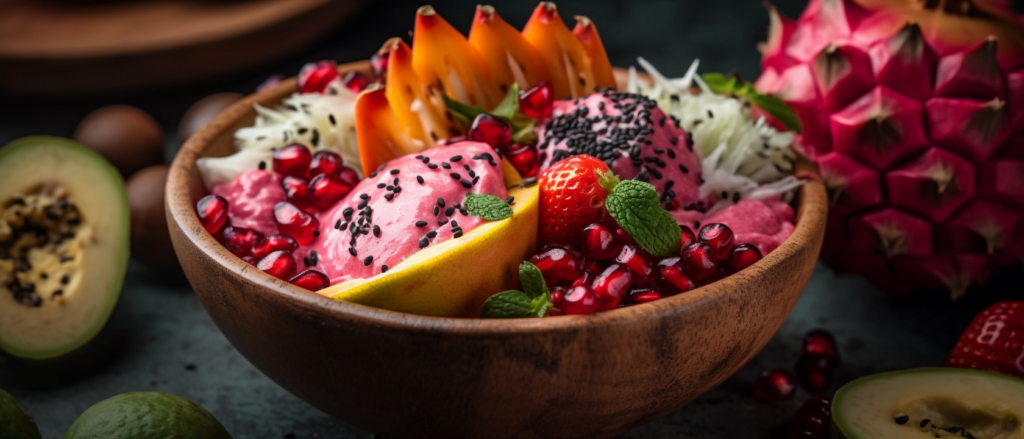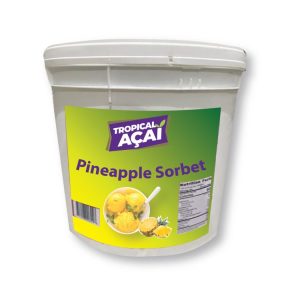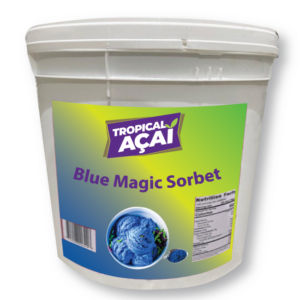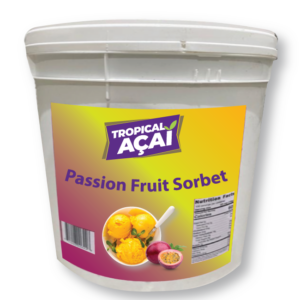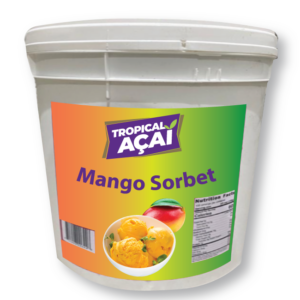Introduction: Discover the Wonders of the Pitaya Bowls
The Vibrant and Nutritious World of Pitaya Bowls
Pitaya bowls are a delightful and visually stunning addition to your breakfast routine. Made from the vibrant pitaya fruit, also known as dragon fruit, these bowls look great and are packed with essential nutrients. From vitamins and minerals to antioxidants and fiber, pitaya bowls offer a refreshing and healthy meal option that will keep you satisfied and energized throughout the day. The bold colors and unique textures make pitaya bowls an Instagram-worthy breakfast pleasing to the eye and nourish your body with wholesome ingredients.
Why the Pitaya Bowls are Your New Favorite Breakfast
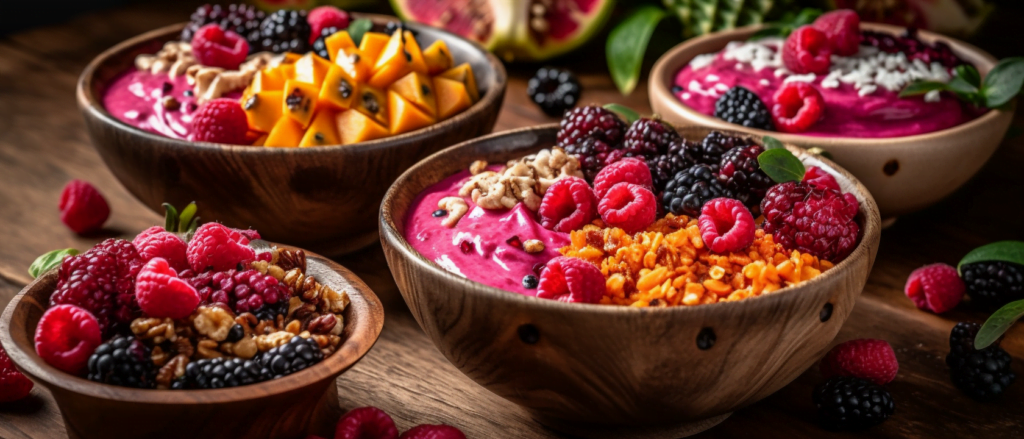
With their eye-catching colors and versatile ingredient options, pitaya bowls have become a trendy and delicious way to start your day. They’re a fantastic alternative to traditional breakfast items, offering unique flavors, textures, and health benefits. Moreover, pitaya bowls are easily customizable, allowing you to tailor your breakfast to your taste preferences and nutritional needs. By choosing a variety of toppings, such as fruits, nuts, seeds, and granola, you can create a satisfying and nutrient-dense meal that fuels your body and keeps you feeling full until your next meal.
Unraveling the Secrets of Pitaya: Dragon Fruit 1×1
The Origin and History of the Pitaya Fruit
Pitaya, also known as dragon fruit, is a tropical fruit native to Central America and the southern regions of Mexico. This tropical fruit belongs to the cactus family and has gained popularity worldwide for its striking appearance and nutritional value. The pitaya fruit has a unique outer skin with leathery, scale-like features, hence the name “dragon fruit.” Historically, pitaya was cultivated and consumed by the indigenous people of the Americas for its taste and health benefits. However, this fruit has made its way to the global market in recent years, garnering attention for its unique characteristics and nutritional profile.
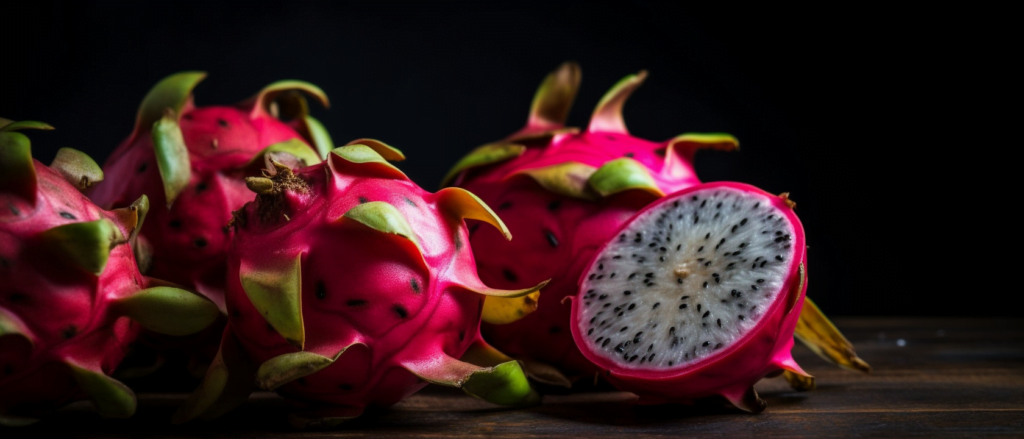
Understanding the Different Types of Dragon Fruit
There are three main types of dragon fruit: Hylocereus undatus (white-fleshed), Hylocereus costaricensis (red-fleshed), and Hylocereus megalanthus (yellow-skinned with white flesh). The three main dragon fruit types differ in color, taste, and nutritional content. The white-fleshed variety, Hylocereus undatus, has a mild and subtly sweet flavor, making it a versatile addition to various dishes. The red-fleshed type, Hylocereus costaricensis, is more precious and flavorful, with a vibrant hue that adds visual appeal to your culinary creations.
The yellow-skinned dragon fruit, Hylocereus megalanthus, has a distinctive sweetness and a slightly firmer texture than the other two varieties. While all three types are packed with nutrients, the red-fleshed variety is known to have higher antioxidant content, making it the most sought-after option for health-conscious individuals. When selecting a dragon fruit variety for your pitaya bowl, consider the flavor and nutritional properties you prefer and the visual impact you want to achieve.
The Power of Pitaya: Health and Nutrition Facts
Essential Vitamins and Minerals Found in Pitaya Fruit
Pitaya fruit is packed with essential vitamins and minerals. It’s an excellent source of vitamin C, which supports a healthy immune system and promotes collagen production for healthy skin. Pitaya also contains B-complex vitamins, including B1, B2, and B3. These vitamins help support energy metabolism and maintain a healthy nervous system.
Additionally, the fruit is rich in minerals such as calcium, phosphorus, iron, and magnesium. Calcium and phosphorus contribute to strong bones and teeth. Iron plays a vital role in red blood cell production and oxygen transportation. Magnesium involves muscle and nerve function, blood sugar regulation, and blood pressure control. Including pitaya in your diet ensures you receive these essential nutrients.
Antioxidant Properties of Dragon Fruit
Dragon fruit is known for its potent antioxidant properties. Antioxidants protect the body from damage caused by free radicals, unstable molecules that can damage cells and contribute to aging and various diseases. By neutralizing free radicals, antioxidants reduce oxidative stress in the body and promote overall health.
The red-fleshed pitaya variety is rich in betacyanins, a class of antioxidants that give the fruit its vibrant color. These compounds offer numerous health benefits, including reduced inflammation, improved heart health, and protection against certain types of cancer. You can enjoy its delicious taste and remarkable antioxidant benefits by incorporating pitaya into your diet.
The Role of Dietary Fiber in Pitaya Bowls
Pitaya bowls are an excellent source of dietary fiber, essential for a healthy digestive system. Fiber is a type of carbohydrate that the body cannot digest. It comes in two forms: soluble and insoluble. Soluble fiber dissolves in water and forms a gel-like substance. Insoluble fiber adds bulk to the stool, promoting regular bowel movements and preventing constipation.
Pitaya fruit is particularly rich in insoluble fiber, which supports optimal digestion and overall health. Fiber-rich diets have been associated with improved blood sugar control, reduced cholesterol levels, and weight management. By enjoying a pitaya bowl for breakfast, you support your digestive health and reap the numerous benefits of a fiber-rich diet.
How Pitaya Aids in Digestion and Immune Health
Pitaya fruit offers digestive benefits through its fiber content and contains enzymes that aid digestion. These enzymes help break down complex carbohydrates, proteins, and fats, making it easier for the body to absorb nutrients. This can lead to improved digestion and reduced bloating and discomfort.
The high vitamin C content in pitaya is crucial in supporting immune health. Vitamin C is necessary to produce white blood cells, which help protect the body against infections and diseases. Therefore, incorporating pitaya into your diet can support your digestive and immune systems, contributing to overall well-being.
Creating the Perfect Pitaya Bowl: Delicious Recipes and Tips
How to Choose and Prepare the Perfect Dragon Fruit for Your Pitaya Bowls
Selecting the right dragon fruit is essential for creating a delicious pitaya bowl. First, look for fruits with bright, even color and firm, unblemished skin. Next, gently the fruit with your thumb; a ripe dragon fruit will yield slightly under pressure but not be too soft. Once you’ve chosen your fruit, follow these steps to prepare it for your pitaya bowl:
- Rinse the dragon fruit under running water and pat dry.
- Cut the fruit in half lengthwise, revealing the flesh.
- Use a spoon to scoop out the flesh, careful not to puncture the skin.
- Dice the flesh into bite-sized pieces, or puree it for a smoother pitaya bowl base.
Now that your pitaya is prepared, you can start building your perfect pitaya bowl.
Crafting Your Pitaya Bowl Base: Blending Techniques and Ingredient Combinations
A well-blended base is crucial for a delicious and smooth pitaya bowl. Start by adding the prepared pitaya fruit to a blender or food processor. Next, consider incorporating a banana or a scoop of yogurt for a creamier texture. Additionally, you can add a splash of milk, almond milk, or coconut water to achieve your desired consistency.
Next, blend the mixture until smooth, scraping down the sides of the blender as needed. Add a few drops of honey, agave, or maple syrup for an extra flavor boost. Don’t be afraid to get creative with your pitaya bowl base; experiment with different fruits, liquids, and sweeteners to find your perfect combination.
Topping Your Pitaya Bowls: Choosing Ingredients for Flavor, Texture, and Nutrition
The toppings you choose for your pitaya bowl add flavor and texture and contribute to the bowl’s nutritional value. Start with a layer of granola or muesli for a satisfying crunch. Then, add fresh fruits, such as berries, kiwi, or mango, for a burst of natural sweetness and added vitamins.
Furthermore, sprinkle nuts and seeds like almonds, chia seeds, or flaxseeds to boost the bowl’s protein and healthy fat content. Next, add a dollop of your favorite nut butter for extra creaminess and a protein kick. Lastly, finish with a drizzle of honey or a sprinkle of shredded coconut for extra sweetness and visual appeal.
By combining a variety of toppings, you can create a pitaya bowl that’s not only delicious but also nutritionally balanced and visually stunning.
Pitaya for Business: Market Analysis and Commercial Aspects
Understanding the Growing Popularity of Pitaya Bowls in the Food Industry
In recent years, pitaya bowls have experienced a surge in popularity in the food industry. This trend can be attributed to several factors, including the increasing consumer demand for healthier and more visually appealing meal options. In addition, as people become more conscious of their dietary choices, the need for nutritious and delicious food offerings has skyrocketed. Pitaya bowls satisfy this demand with their vibrant colors, unique flavors, and nutrient-dense ingredients.
Moreover, the rise of social media has played a significant role in popularizing pitaya bowls. The visually stunning nature of these bowls makes them perfect for sharing on platforms like Instagram, contributing to their widespread appeal. As a result, businesses that offer pitaya bowls can capitalize on this trend by attracting health-conscious consumers and leveraging the power of social media.
Addressing Store Owners’ Questions: Quality, Certifications, and Supply Chain
As a store owner considering adding pitaya bowls to your menu, you may have concerns about quality, certifications, and supply chain management. When sourcing pitaya fruit, it’s crucial to find suppliers who prioritize quality and adhere to food safety standards. Look for suppliers with certifications such as GlobalG.A.P., HACCP, or USDA Organic to ensure they meet strict food safety and quality guidelines.
Additionally, consider the supply chain of your pitaya fruit. Opt for suppliers who can provide consistent and reliable delivery, ensuring that your business always has access to fresh, high-quality pitaya fruit. By selecting a trustworthy supplier, you can guarantee that your pitaya bowls will be of the highest quality, delighting your customers and contributing to the success of your business.
Exploring the Commercial Potential of Pitaya Bowls in Your Business
The growing popularity of pitaya bowls presents a lucrative opportunity for businesses in the food industry. By offering pitaya bowls on your menu, you can attract health-conscious customers and capitalize on the increasing demand for nutritious and visually appealing meal options. In addition, pitaya bowls can be easily customized, allowing you to create a diverse and enticing menu that caters to various tastes and dietary preferences.
To make the most of this opportunity, ensure that your pitaya bowls are made with high-quality ingredients, and focus on presentation to create an unforgettable dining experience for your customers. By doing so, you can differentiate your business from competitors and establish a loyal customer base that appreciates your commitment to quality, health, and visual appeal.
Conclusion: The Many Benefits and Versatility of Pitaya Bowls
Embracing the Health and Nutritional Advantages of Pitaya Bowls
Pitaya bowls offer a unique combination of health and nutritional benefits, making them an excellent addition to any diet. Rich in vitamins, minerals, antioxidants, and dietary fiber, pitaya bowls promote overall well-being and can help support immune function, digestion, and heart health. By incorporating pitaya bowls into your meal plan, you can enjoy a delicious and nutritious meal that looks great and contributes to a healthier lifestyle.
Expanding Your Culinary Horizons with Pitaya Bowls
Pitaya bowls provide endless opportunities for creativity in the kitchen. With a wide range of potential ingredients and toppings, you can experiment with various flavor and texture combinations to create a pitaya bowl that perfectly suits your taste preferences. Whether you prefer a creamy, fruit-filled bowl or a crunchy, nutty concoction, pitaya bowls allow you to explore new culinary possibilities and enjoy a visually stunning and satisfying meal.
Frequently Asked Questions
What is the best way to store pitaya fruit?
Store uncut pitaya fruit at room temperature. Once cut, wrap the fruit in plastic wrap and store it in the refrigerator for up to five days.
Is pitaya bowl suitable for vegans?
Yes, pitaya bowls can be easily adapted to a vegan diet using plant-based milk, yogurt, and toppings.
Can I make pitaya bowls ahead of time?
You can prepare the pitaya base and store it in the refrigerator. However, it’s best to assemble the bowl with toppings before serving to maintain optimal freshness and texture.
What if I can’t find fresh pitaya fruit?
You can substitute frozen pitaya or pitaya puree if fresh pitaya fruit is unavailable.
Are pitaya bowls suitable for people with dietary restrictions?
Pitaya bowls can be easily customized to accommodate various dietary restrictions, including gluten-free, dairy-free, and low-sugar diets.
How can I make my pitaya bowl more protein-rich?
To increase the protein content of your pitaya bowl, add protein-rich toppings such as nuts, seeds, nut butter, or Greek yogurt.
What other fruits can I use in my pitaya bowl?
Feel free to experiment with other fruits like berries, bananas, mangoes, kiwi, and pineapple to create unique and delicious pitaya bowl combinations.
Can I use other types of yogurt in my pitaya bowls?
Yes, depending on your taste preferences and dietary needs, you can use any type of yogurt, including Greek, coconut, almond, or soy yogurt.
Is it possible to make a pitaya bowl without a blender?
If you don’t have a blender, mix the pitaya fruit with a fork with yogurt or milk to create a pitaya bowl base.
What is the difference between red and white-fleshed pitaya fruit?
The main difference between red and white-fleshed pitaya fruit is the color of their flesh. In addition, red-fleshed pitaya has a higher antioxidant content due to its betacyanin content, while white-fleshed pitaya has a milder flavor.

